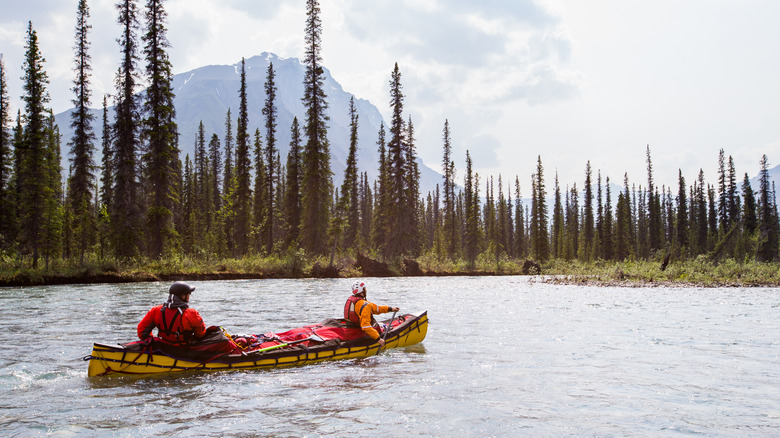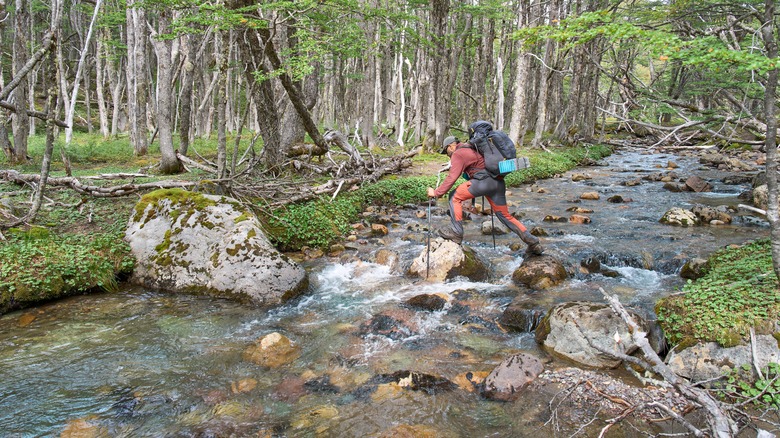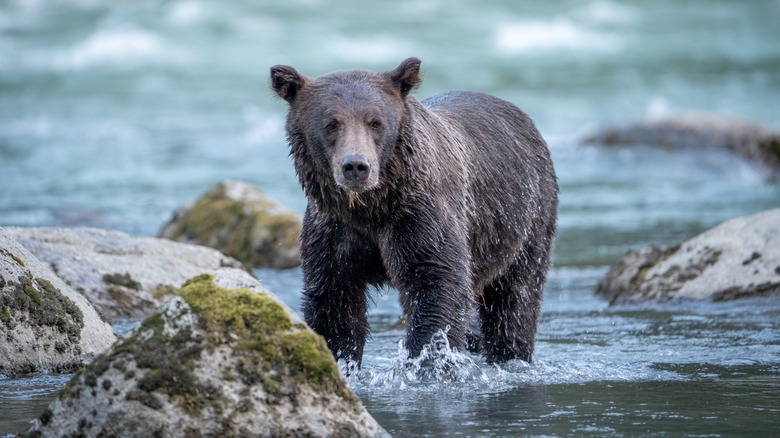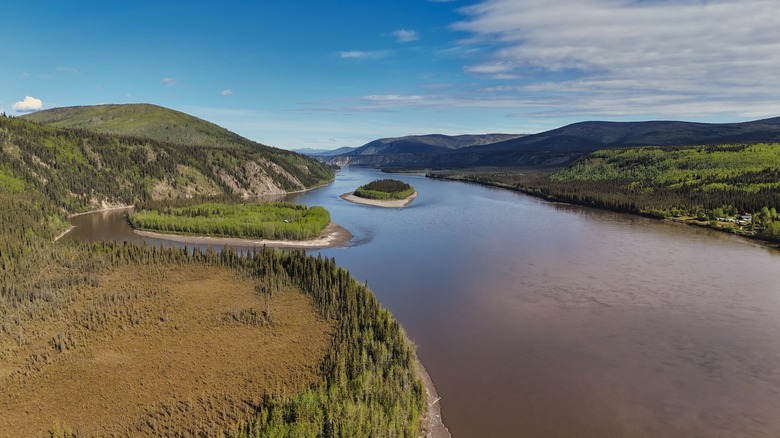Chilling Reasons Why Alaska's Yukon-Charley Rivers National Preserve Is So Dangerous
Alaska is a land of beauty and untouched nature but gaining access to see some of those untouched landscapes with your own eyes can be a challenge of its own. One of these regions is Yukon-Charley Rivers National Preserve tucked away in the Interior of Alaska, only accessible in the summer by plane, boat, or a long gravel dirt road. While it's fun to get off the beaten track, there are dangers of visiting an area so remote.
Yukon-Charley Rivers National Preserve spans 2.5 million acres stretching to the Canadian border and encompassing the whole Charley River and 130 miles of the Yukon River. While you're at the park, there are no amenities or cell service like at a developed national park. There are four towns that most visitors leave from: Fairbanks, Tok, Eagle, or Circle. When you leave civilization, you will be in the wilderness and have to be fully self-sufficient until you return to town.
Adventure seekers go to the national preserve to seek the untouched beauty and solitude, but there are dangers to consider and precautions to take so you can enjoy it and return safely. For one, the Yukon River is powerful and known for icy waters and strong currents that can pose danger to boaters. While heading out into the Alaskan wilderness, bears are of course something to consider. And, as the preserve's website says, "you're on your own," making it essential to arrive prepared for emergencies.
Icy rivers have strong currents
Yukon-Charley Rivers National Preserve may not be one of the must-see places in Alaska for first-time visitors, because a safe trip requires experience and confidence in rural landscapes — especially when it comes to navigating wild rivers. While out in the backcountry, careful consideration should be used when it comes to river crossings. With practice and the right footwear, you can learn to identify safe ways to cut across a stretch of river.
If a river crossing doesn't feel safe, don't take it, and find an alternate route. The water in the rivers can be dangerously cold, posing a hypothermia risk. And the currents can be so powerful they might knock you off your balance and sweep you down the river. Some currents even carve the riverbeds, creating drop offs and eddies, which are sections of circular flowing water going up the river. When strong enough, they can overturn a boat or hold a person underwater. So proper precautions and gear — including hiking poles — are required for safe river crossing or it can quickly turn dangerous. Be sure to pack lots of warm socks so you can change them out when your feet get cold and wet.
Bears live throughout the park
Bear encounters are another risk to prepare for while being out in remote Alaska. However, taking the proper precautions can keep you safe and help make a sighting a positive experience. Before you head into the preserve, the National Parks Service recommends that you take a backcountry and bear safety orientation at a visitor center, as it's helpful to know what to do if you run into a bear while hiking. Yukon-Charley Rivers National Preserve is home to black and brown bears, and how you approach the situation depends on the type of bear you see.
That said, one of the first steps to preventing dangerous bear encounters is to keep your food properly stored in a bear-resistant food container. It is also important to check your route and consider seasonal activity, such as when berries are ripe or salmon start migrating upstream, as these can draw more bears to certain areas. When choosing a campsite, look out for specific signs of bears like claw marks or bear scat, and move to another area if needed. Choose a campsite where you have clear views of the surrounding area and routes for bears to move by unhindered to avoid forced bear encounters. The risk of an encounter is amplified by the remoteness of the park. Not only is it likely you will encounter a bear, but if something were to happen, it would be extremely difficult to get help.
You're on your own
A trip to the Yukon-Charley Rivers National Preserve takes a lot of planning to explore the vast landscape safely. The National Park Service has specific guides for the type of backcountry adventures you're doing whether it's rafting or hiking. It's recommended to make a detailed trip plan of where you plan to go and when, as well as what your loved ones should do if they do not hear from you by a certain time.
Keep your trip plan on you and leave one with your loved ones and even your pilot or boat captain when you access the preserve. Keep in mind that your aircraft may not be able to fly on your scheduled days if the weather is bad, so it's important to have extra food to carry yourself through any delays. In order to communicate with your transportation or emergency services, a satellite phone is recommended as a reliable form of two-way communication in the backcountry. If you don't own one, they are available for rent in Fairbanks.
Although it is very dangerous being out that remote in the wilderness of Alaska and you should definitely take precautions, injuries and deaths are rare. According to the NPS incident report, the last incident other than natural disasters like fires or flooding was a boating accident in 2006. So, if you are adventurous and experienced, explore the Last Frontier, just take some precautions and maybe a satellite phone with you. Here's how to DIY your Alaska vacation plan.



